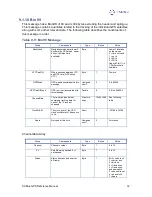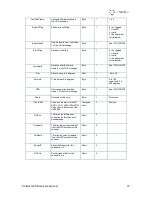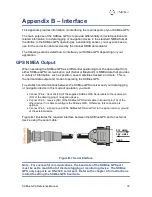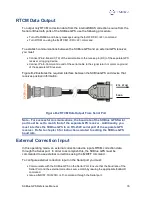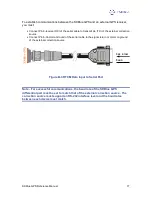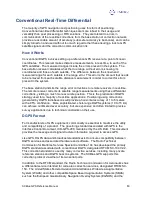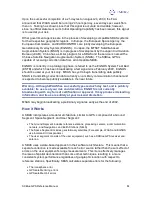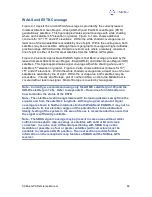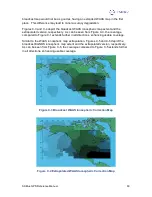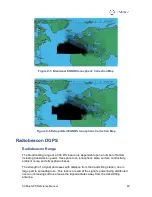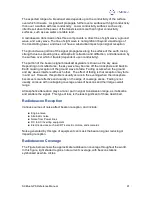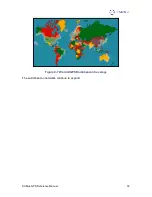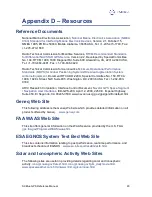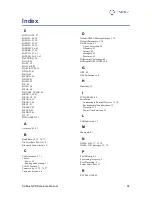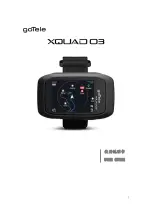
SXBlue GPS Reference Manual
86
WAAS and ESTB Coverage
Figure C-1 depicts the current WAAS coverage as provided by the currently leased
Inmarsat Atlantic Ocean Region - West (AOR-W) and Pacific Ocean Region (POR)
geostationary satellites. This figure approximates signal coverage with white shading
where each satellite is 5
°
elevation or greater. Figure C-1 also shows additional
contours for 10
°
, 15
°
, and 20
°
elevations. Within the white shaded coverage area, at
least one of the two satellites is available by line of sight. Within the overlap area, both
satellites may be accessible. Although there is geographic coverage at higher latitudes,
practical usage of WAAS will be limited to environments where a relatively consistent
line of sight to either of the Inmarsat satellites from the SXBlue GPS system.
Figure C-2 presents approximate EGNOS System Test Bed coverage provided by the
leased Inmarsat Atlantic Ocean Region - East (AOR-E) and Indian Ocean Region (IOR)
satellites. This figure approximates signal coverage with white shading where each
satellite is 5
°
elevation or greater. Figure C-2 also shows additional contours for 10
°
,
15
°
, and 20
°
elevations. Within the white shaded coverage area, at least one of the two
satellites is available by line of sight. Within the overlap area, both satellites may be
accessible. Virtually all of Europe, part of northern Africa, and into the Middle East is
covered with at least one signal. Most of Europe is covered by two signals.
Note - Currently, we recommend using only the AOR-E satellite (prn 120) and the
IOR-W satellite (prn 126). Refer to Appendix D – Resources for information on
how to monitor the status of the ESTB.
Note - The satellite elevation angle lowers with increasing distance away from the
equator and from the satellite’s longitude. Although a good amount of signal
coverage is shown in Northern latitudes for both WAAS and EGNOS, it may not be
usable due to its low elevation angle and the potential for it to be obstructed.
Ideally, testing of the system in the area of its use is recommended to ensure that
the signal is sufficiently available.
Note - The SBAS signal coverage may be present in some areas without either
sufficient ionospheric map coverage or satellites with valid orbit and clock
correctors. In such a case, differential positioning with SBAS may not be
desirable or possible, as four or greater satellites (with correctors) must be
available to compute a DGPS position. The next section provides further
information on the ionospheric map features of SBAS and the SXBlue GPS
receiver.

